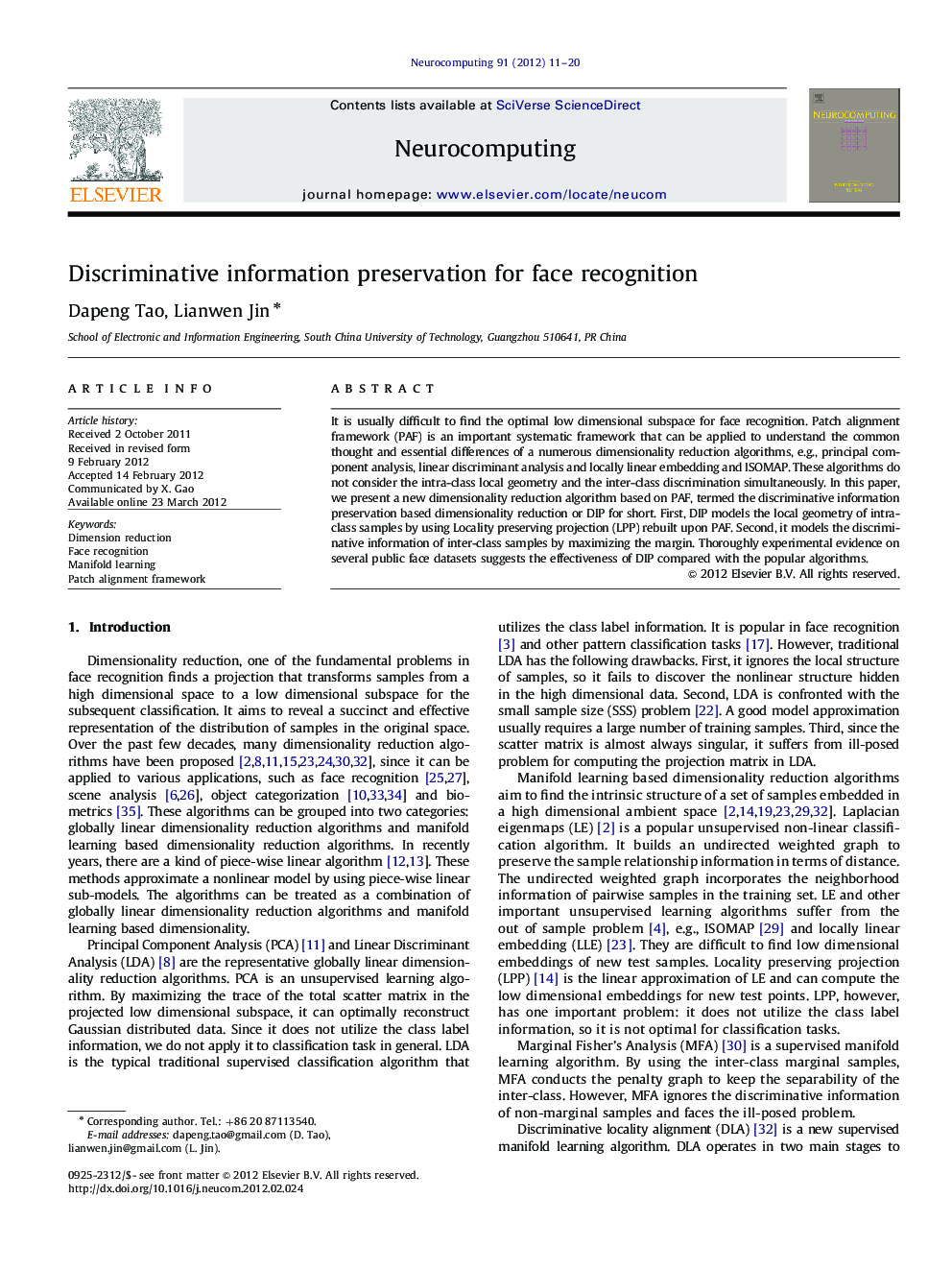| Article ID | Journal | Published Year | Pages | File Type |
|---|---|---|---|---|
| 409953 | Neurocomputing | 2012 | 10 Pages |
It is usually difficult to find the optimal low dimensional subspace for face recognition. Patch alignment framework (PAF) is an important systematic framework that can be applied to understand the common thought and essential differences of a numerous dimensionality reduction algorithms, e.g., principal component analysis, linear discriminant analysis and locally linear embedding and ISOMAP. These algorithms do not consider the intra-class local geometry and the inter-class discrimination simultaneously. In this paper, we present a new dimensionality reduction algorithm based on PAF, termed the discriminative information preservation based dimensionality reduction or DIP for short. First, DIP models the local geometry of intra-class samples by using Locality preserving projection (LPP) rebuilt upon PAF. Second, it models the discriminative information of inter-class samples by maximizing the margin. Thoroughly experimental evidence on several public face datasets suggests the effectiveness of DIP compared with the popular algorithms.
